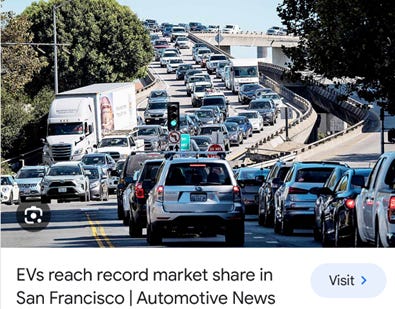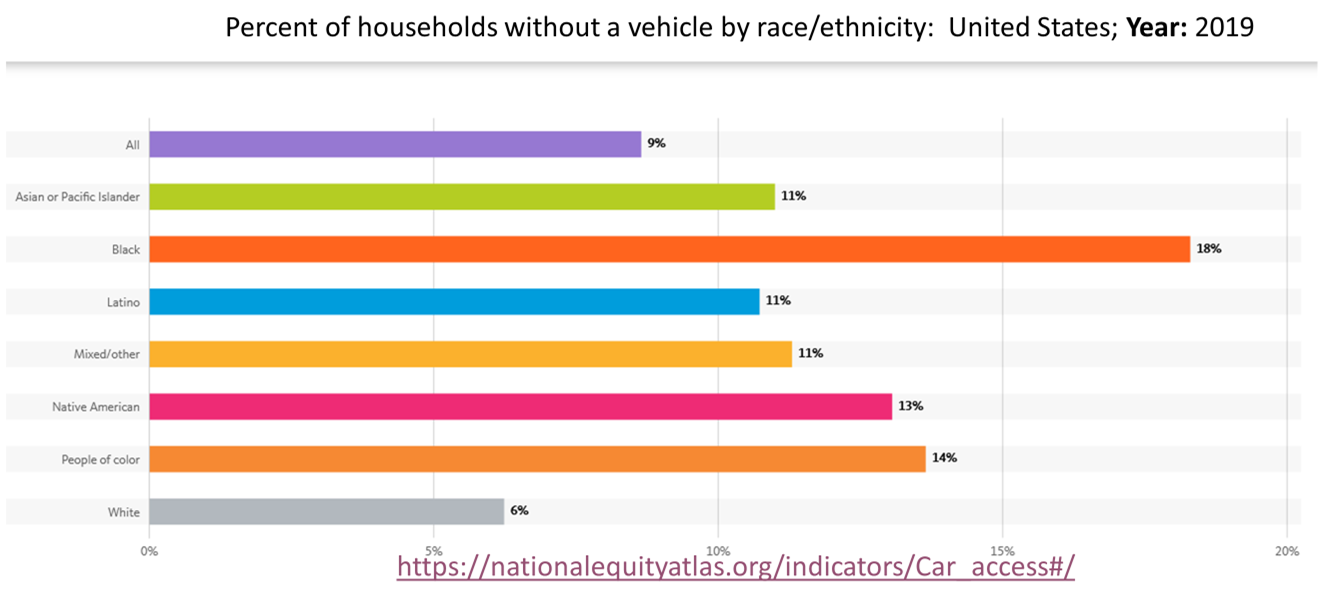Electric Vehicles - Simply Another Type of Car
Let’s assume every gasoline car in the world is replaced with an EV and that EVs are charged with clean electrical grids everywhere. Let's also assume that the mineral extraction required for EV batteries and motors and the manufacturing of EVs are done without producing any greenhouse gases. In such a world, transportation no longer contributes to climate change. What is not included in this scenario is that EVs are cars and trucks. Unless there are alternative means of transportation, the shortcomings of the present-day car-dominated transportation system, namely safety, and mobility, and their related economic and quality of life-related costs will continue to be with us in this cleaner world.
Cars can be dangerous means of transportation. Many of those killed are pedestrians, including close to 8000 in the United States in 2021 according to the CDC, a number that has been growing steadily for about a decade. In 2018, the WHO estimated that 1.25 million were killed and up to 50 million injured on roadways around the world, most of them in the so-called developing countries. The data collected by the U.S. National Highway Traffic Safety Administration showed that in 2019 more than 36,000 were killed and 4.5 million were injured in motor vehicle traffic crashes on U.S. roadways, resulting in $1.37 trillion in financial and quality of life harm to society.
One measure of vehicle utility is whether it provides people with mobility - the ability to move freely and easily. U.S. drivers, however, spent 8.8 billion extra hours in traffic in 2017 due to congestion according to the American Society of Civil Engineers (ASCE). In 2022 a total of $55 billion was lost in productivity to road congestion with the average time spent in traffic being 51 hours and lost productivity at $869 per driver according to the research firm INRIX. ASCE estimates that 43% of roads in the United States are in either poor or mediocre condition costing motorists nearly $130 billion each year on extra vehicle repairs and requiring $786 billion in capital investment.
Mobility is closely linked to individuals’ ability to improve their socioeconomic position. Upward mobility requires access to educational and employment opportunities. Wherever private cars and trucks are the dominant means of transportation, those without cars must rely on public transportation. However, in car-dominated societies such as the United States, public transportation is regularly underfunded and as a result can only provide limited mobility to those who need it the most. Public transportation may be running on batteries or clean electricity. Yet, electric buses and trains will continue to arrive too far apart and take passengers only to limited destinations. Buses in this scenario will be stuck in traffic. Already, close to 10% of households in the United States do not own a vehicle. Minority communities have even less access to private cars or trucks. Nineteen percent of African Americans, for example, do not own a car.
At the global level, only about 15% of the population own cars.1 A car-dominated transportation system, albeit all clean-running EVs, therefore, will not improve socioeconomic mobility. A sizable portion of the world population will remain locked outside of educational and occupational opportunities because they cannot afford to purchase and maintain a private automobile. Already EV owners are overwhelmingly those who have made it in America. They are older, college-educated White males with an annual income of 100,000 or more.2
What are possible solutions? A large-scale study by climateandcommunity.org and the University of California Davis in 2023 shows us a two-pronged path forward. One is investment in alternative transportation options, namely efficient public transportation and safe cycling infrastructure similar to many European countries. Having convenient access to alternative means of transportation is linked to reduced driving. The other path is the adaptation of land use policies that encourage the development of walkable cities.3 Together these parallel paths will reduce the need for private transportation and return mobility in American cities closer to how it was a hundred or so years ago: Walkable cities with world-class public transportation.




